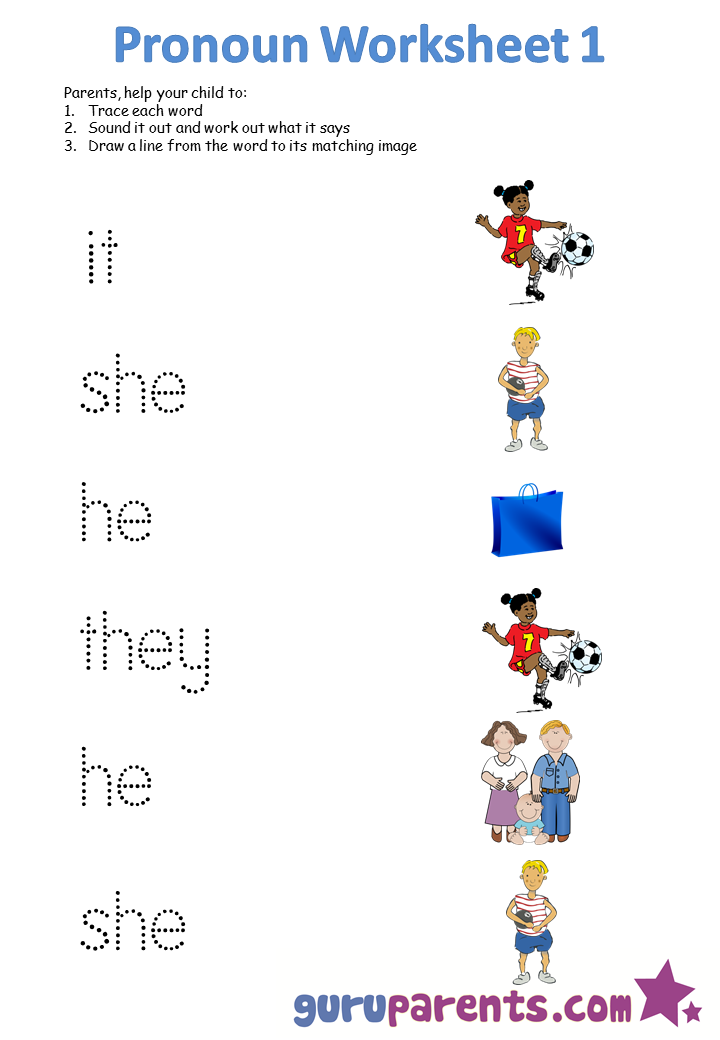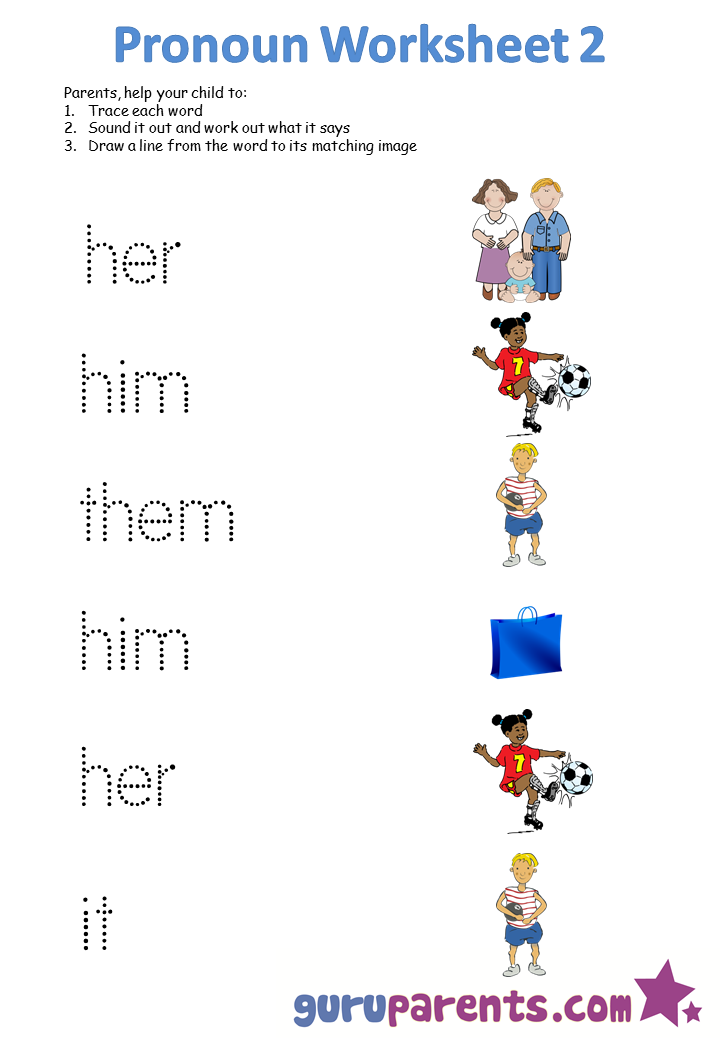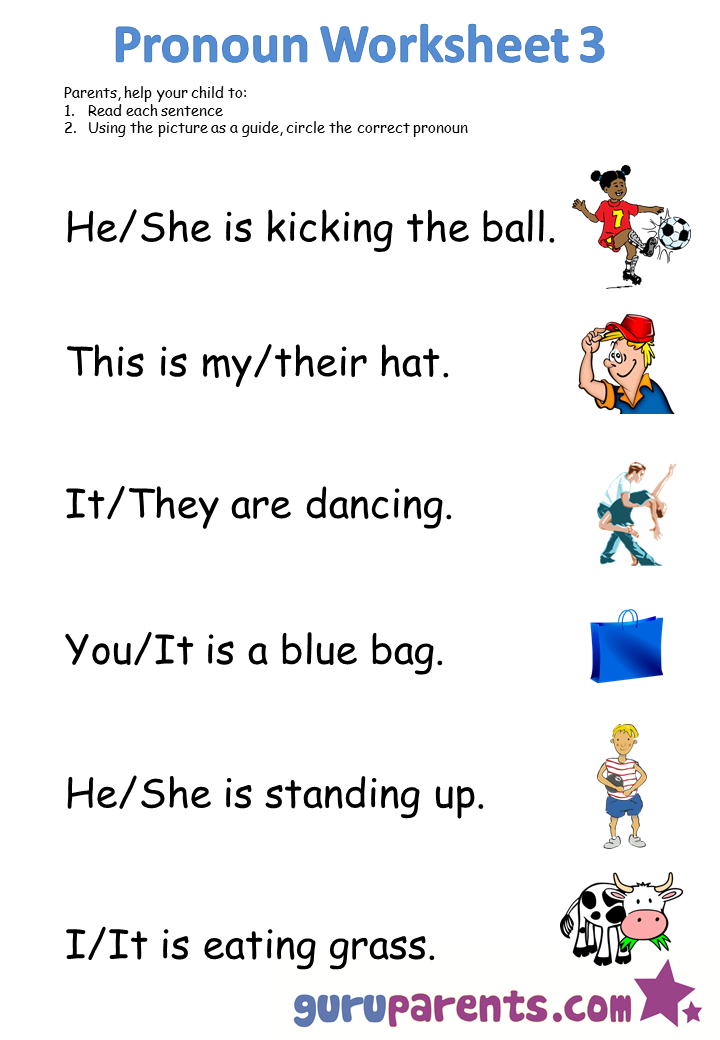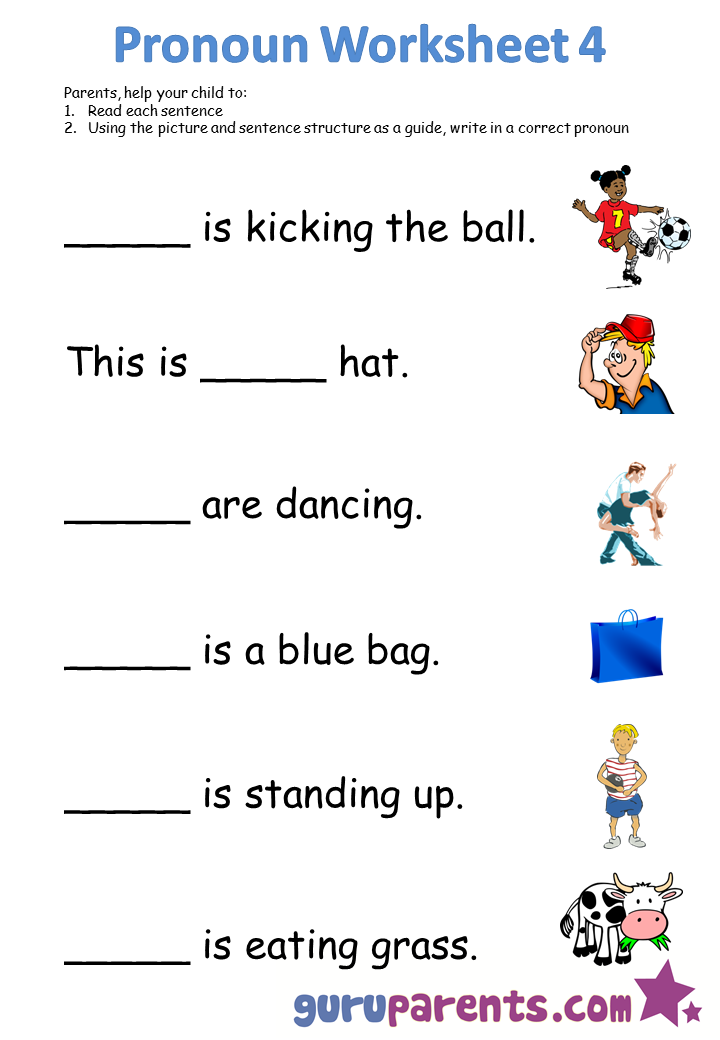Worksheets
Click here to download all pronoun worksheets
Introduction
Our free, printable pronoun worksheets will give your child a simple introduction to personal pronouns.
Personal pronouns are words such as “I”, “you”, “her” and “they” which are used instead of the actual names of people or things. They are an essential part of the language – for example, consider this sentence:
“Bob put away his newspaper and he and Julie then began painting their house.”
In the absence of pronouns it would have to read something like:
“Bob put away Bob’s newspaper and Bob and Julie then began painting Bob and Julie’s house.”
As you can see, pronouns are used all the time, so it is important that children learn how to use them correctly!
The worksheets
We have created four pronoun worksheets, as follows:
Worksheet 1: “Subject” personal pronouns are written in dotted font. The child is asked to trace the words and to match each word to its correct image.
Worksheet 2: “Object” personal pronouns are written in dotted font. The child is asked to trace the words and to match each word to its correct image.
Worksheet 3: Several sentences are written, and in each one the child is asked to select the correct pronoun from two options.
Worksheet 4: The same sentences appear as in worksheet 3, but this time the child is not given a choice of two answers – instead they are asked to come up with the correct answer without assistance.
Benefits
The advantages of using the worksheets are as follows:
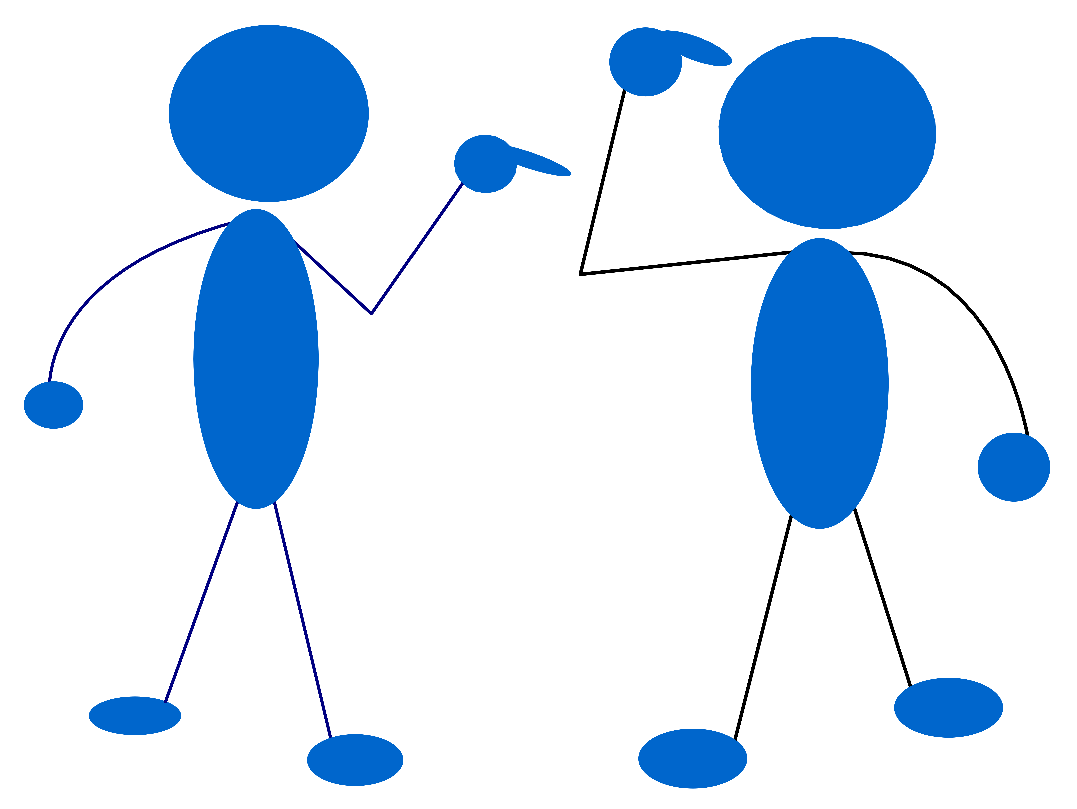
1. Handwriting practice: By tracing the pronouns in worksheets 1 and 2, and filling in the blanks in worksheet 4, your child will be having a mini handwriting lesson.
2. Letter combinations and language rules: The pronouns contain examples of several important facets of English spelling and pronunciation. Some examples include, the “th” sound in “them”, the “sh” sound in “she”, the need for a capital “I” in “I”, and the different spelling of “their” when it relates to ownership.
3. Practice with “he” and “she”: Some children, (especially, but not only those learning English as a second language), have a tendency to mix up the genders in simple words. Every elementary school teacher will have stories of children saying things like, “She hit me!” when they are clearly pointing to a boy. Practice in using pronouns correctly is important to eliminate such mistakes.
4. Practice with pronouns in context: In the 4th worksheet, the answers do not necessarily need to match those of the third worksheet – some other pronouns will also work. However, some answers are not possible, even though they might match the picture, because of the sentence structure.
For example, take the second last question which features a picture of a boy and the sentence, “_______ is standing up.” If your child chooses, “You”, or “I” you will have an opportunity to discuss with them how the presence of “is” means that neither of these two words can be used.
5. Introduction to the concept of pronouns: The concept of a pronoun is harder to grasp than that of a noun or a verb, so don’t be put off if your child struggles with it. At this stage, it is simply good that they have experienced some introductory exposure to this class of words – it will stand them in good stead for grammar lessons at school in the years to come.
Final word
If your child finds these pronoun worksheets too advanced, do not fret. The most important thing for young children when it comes to reading is that they enjoy it!
So if your child is not having fun, why not play a board game with them instead. Monopoly is an all time classic and is great fun for everyone, but it also contains a wealth of learning opportunities – so is a perfect win/win!

